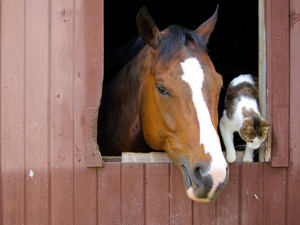If you are looking at this list of the 10 most common phobias or fears, there is good news! You most likely do not have pinaciphobia, or rather, the fear of lists.
10. Necrophobia
Zombies, mummies, frankenstein, vampires…people always seem to fear those that are dead, undead, or otherwise not living. Necrophobia, or the fear of the dead, is when you feel afraid of death or of dead things. The majority of Hollywood thrillers and horror films focus on exploiting the majority’s fear of the macabre.
9. Brontophobia
No, this is not a kind of dinosaur, but a fear of thunderstorms. Also known as astraphobia, keraunophobia and tonitrophobia, brotophobia is the fear of lightning and thunder and is particularly common among children. However, from firsthand experience, there are many adults out there who fear lightning and the less harmful thunder just as much as children do.
8. Mysophobia
Commonly found in those with OCD, mysophobia is the fear of germs or dirt. Kids are notorious for not having this phobia, while Lady Macbeth and Howie Mandell are famous for their hardcore mysophobic tendencies. Symptoms include excessive handwashing and avoidance of shaking hands or touching anything.
7. Emetophobia
Emetophobia sounds like what it is: the fear of emitting or vomitting. This fear extends from fearing the action of vomiting as well as to come in contact with or seeing others vomiting. Emetophobia is often found in those who are ill, have an eating disorder or fear germs as well. Emetophobia also goes hand in hand with a fear of food or injestion, which can make it a complicated phobia to treat.
6. Claustrophobia
Ever hate being in a cramped elevator or small room? You may be suffering from claustrophobia, or the fear of being trapped in small confined spaces. One of the most common phobias, it is known for varying in degree from person to person, with symptoms ranging from mild discomfort to full-blown panic attacks. The good news is that treatment is available and normally is easily curable.
5. Agoraphobia
Agoraphobia is a common, yet complex phobia that often leaves people unable to leave their homes. This phobia involves an intense fear and avoidance of any place or situation where an escape might be difficult or help unavailable in the event of developing sudden panic-like symptoms. Essentially, it is the fear of having a panic attack in public and not being able to go somewhere private. Famous agoraphobics include Howard Hughes, Paula Deen, Woody Allen and Donny Osmond.
4. Aerophobia
Alanis Morrissette sang “Mr. Play-it-safe was afraid to fly”…he clearly suffered from aerophobia. Aerophobia is the fear of flying. This phobia is usually caused after the sufferer watches incidents of plane crashes on the news or loses a loved one due to a plane crash. More than 25% of people have aerophobia in some form.
3. Acrophobia
How many times have you heard someone back out of a amusement park ride due to his or her fear of heights? This fear is known as acrophobia. The height may vary from simply a step ladder to the height of a tall building and severity of symptoms differ from person to person as well. A study has shown that humans may be genetically or instinctualy inclined to avoid heights that appear dangerous.
2. Social Phobia
As of 2008, approximately 5.3 million American adults have social phobia. Social phobia is the far of being viewed of judged negatively in a social interaction. At its strongest, social phobia symptoms can include persistent fear, anxiety attacks and harmful effects on the victim’s life as a functioning person.Social phobias are diagnosable and treatable, particularly when another phobia is not involved in causing a social phobia.
1. Arachnophobia
Indiana Jones was afraid of snakes, but one of the most common phobias is arachnophobia: the fear of spiders. Nearly half of women and 10 percent of men have a fear of spiders. Arachnophobia is so common that there is even a film named after the fear. The widespread cause of this fear is debated, but some psychologists suggest it is a remaining instinct to avoid venomous spiders in caveman days.

